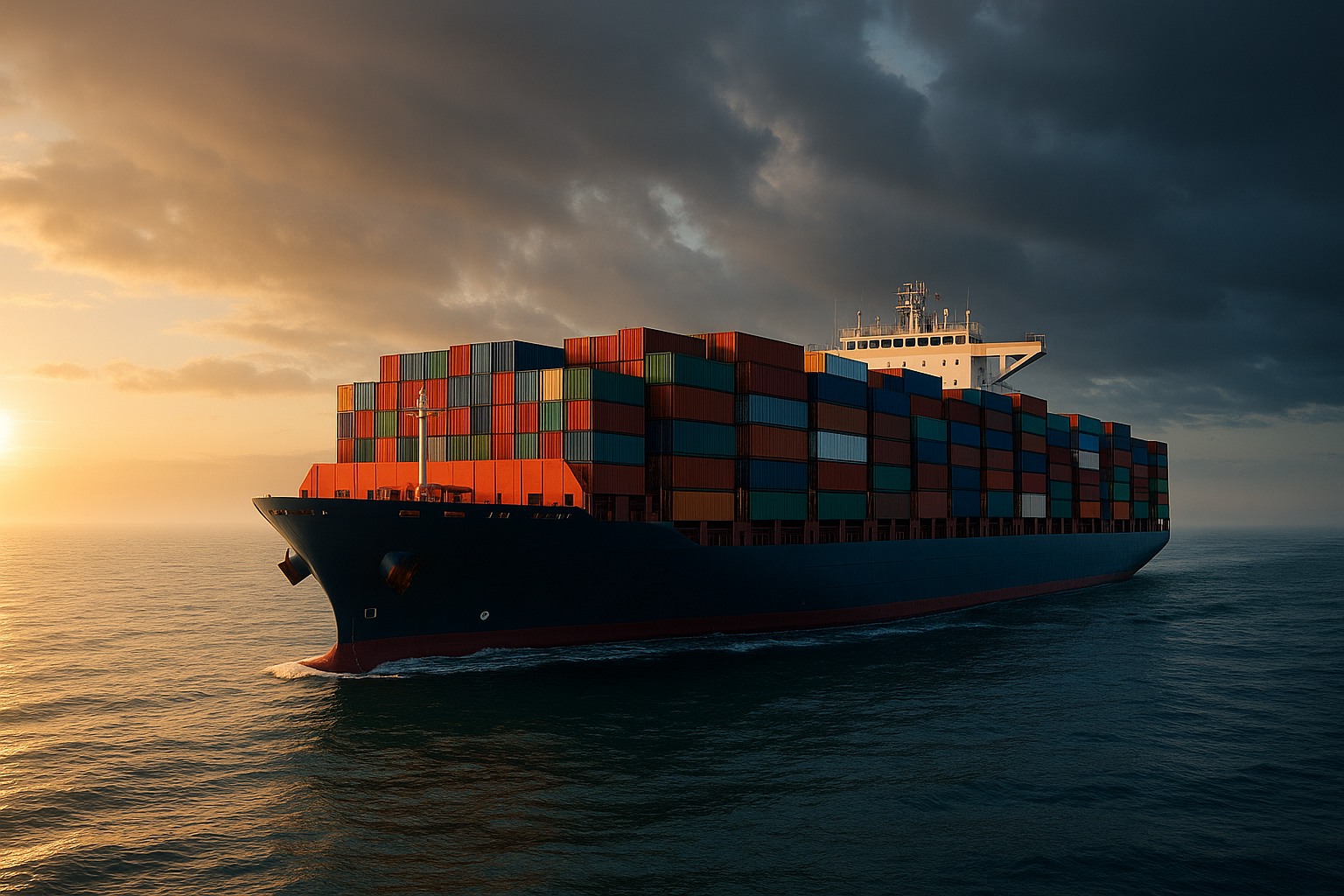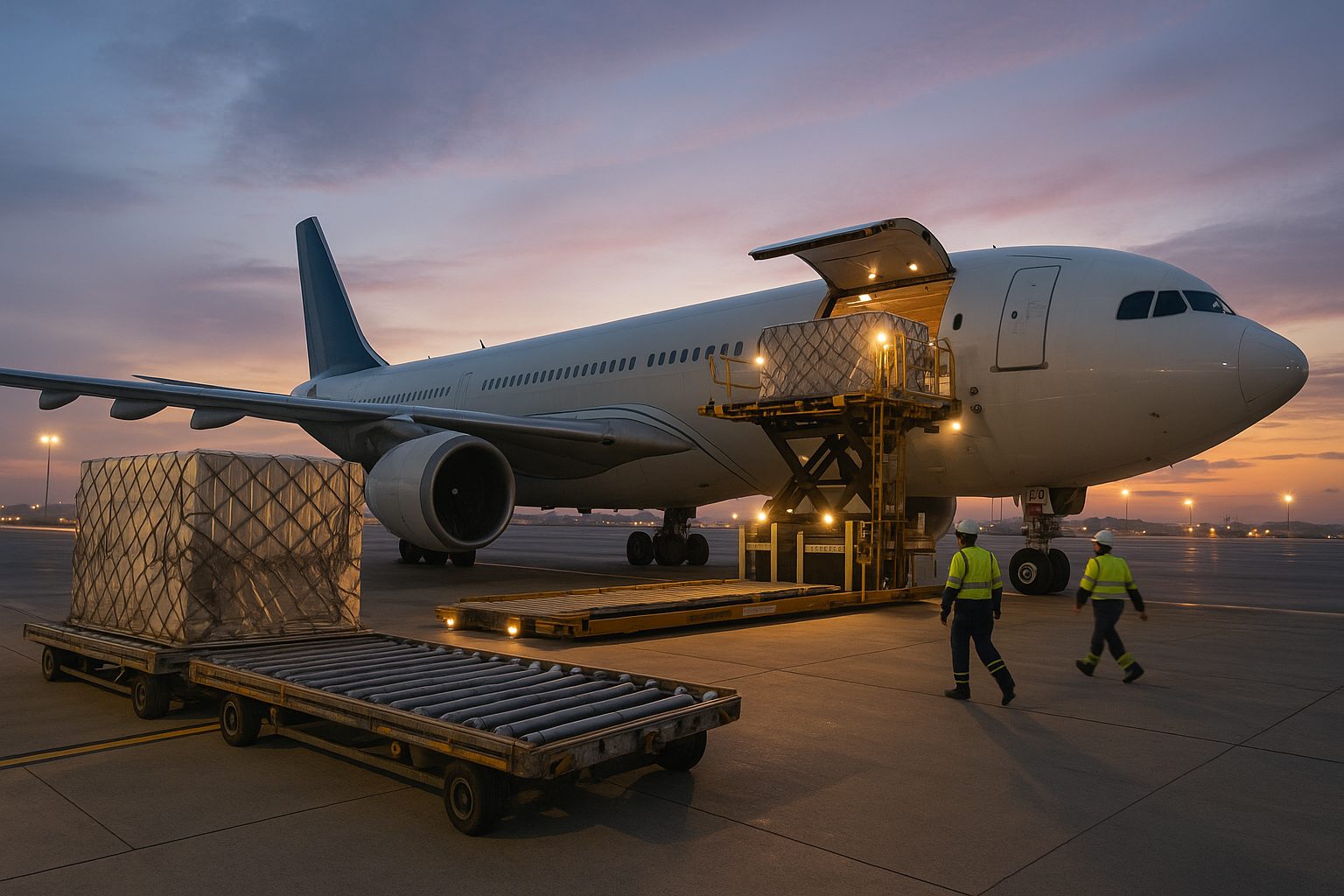Freight transportation is the backbone of the global economy.
Without effective freight transportation, supply chains would crumble, and industries would face enormous challenges in meeting consumer demand.
This guide offers a comprehensive look at the different modes of freight transportation, factors to consider when selecting the right mode, and best practices for optimising your logistics strategies.For businesses looking to streamline operations and gain full visibility across carriers, Cario offers a powerful freight management platform built for efficiency and scale.
Let's Get Straight to the Point
Freight transportation is important for moving goods efficiently across the globe and forms the backbone of the supply chain. It involves various modes of transportation, including road, rail, air, and ocean shipping, each with unique benefits and limitations.
Key factors in choosing a transport mode include distance, cost, type of goods, time sensitivity, and environmental impact. These factors must be considered to optimise the supply chain to transport goods efficiently.
Road transport is flexible and direct but less suited for long distances. Rail freight and ocean shipping are cost-effective for bulk or heavy cargo. Air freight is the fastest but most costly and best for smaller shipments.
Multimodal transport, which combines multiple modes, optimises cost and efficiency, especially for long-distance or international trade.
Best practices include selecting the right mode, optimising costs, adopting sustainable options like rail or sea transport, and leveraging technology for streamlined logistics.
By understanding these factors, businesses can choose the most cost-effective mode while ensuring reliable, eco-friendly freight transportation.
What is Freight Transportation?
Freight transportation refers to moving goods from one location to another using various modes of transportation, such as road, rail, air, and ocean shipping. It is a critical component of supply chain management, ensuring that products are delivered to customers promptly and efficiently.
Why Freight Transportation is Vital
Freight transportation plays an important role in the logistics of businesses, supporting the movement of goods locally, nationally, and internationally.
Key advantages of freight transportation include:
Improved Accessibility: Goods can be transported even to remote or landlocked areas, thanks to various transportation modes.
Flexibility and Efficiency: Freight transportation offers adaptable solutions for various goods and shipping requirements.
Cost-Effectiveness: Businesses can optimise shipping routes and costs by choosing the most cost-effective mode.
Environmental Benefits: Certain modes, like rail networks and ocean transportation, have a lower carbon footprint than road freight or air cargo, reducing the overall environmental impact.
Modes of Freight Transportation

Choosing the right mode of transportation is essential for efficient logistics. Each mode offers unique advantages and disadvantages depending on the type of goods, distance, and cost considerations.
Intermodal transport, which combines two or more modes of transportation, such as road and rail, enhances efficiency and cost-effectiveness for long-distance shipments by reducing the drawbacks of individual modes and offering flexibility under multiple contracts.
1. Road Transport
Road transport is the most widely used freight transportation, offering unparalleled flexibility for short to medium distances. Trucks and other vehicles deliver goods directly to destinations without requiring additional handling.

1. Key Benefits of Road Transport
Flexibility: Suitable for short distances or areas where rail networks and sea transport are inaccessible.
Direct Routes: Enables goods to move directly from sender to recipient.
Cost-Effective Solution: Road freight can be a cost-effective mode for smaller shipments or regional deliveries.
2. Challenges
Congestion: Delays due to traffic or poor weather conditions.
Higher Costs for Long Distances: Inefficient for long distances or bulk cargo.
2. Rail Transport
Rail transportation is ideal for transporting large volumes of goods over long distances. Trains use rail networks to provide reliable, environmentally friendly freight services.
1. Advantages
Eco-Friendly: Produces fewer emissions than road or air shipping.
Cost-Effectiveness: Particularly beneficial for bulk cargo and raw materials.
Safety: Lower accident rates than road transport, ensuring safer handling of fragile or hazardous materials.
2. Limitations
Limited access to rural areas, requiring multimodal transport for final delivery.
3. Air Transportation

Air transport is the fastest mode of freight transportation compared to any other mode, making it indispensable for time-sensitive or high-value shipments.
1. Benefits
Speed: Ideal for urgent deliveries and international trade.
Reliability: Lower transit risks due to minimal handling.
Versatility: Handles diverse cargo, including perishable goods, air freight, and hazardous materials.
2. Disadvantages
High Costs: Not a cost-effective solution for bulk cargo or long distances.
Limited Volume: Best for smaller shipments.
4. Ocean/Ship Transport
Ocean transportation is the cornerstone of global trade. Cargo ships and bulk carriers move goods across oceans and waterways.
1. Pros
Cost-Effective: The most cost-effective mode for sea freight and bulk cargo.
High Volume: Perfect for transporting large volumes of goods, such as industrial equipment or raw materials.
Sustainability: Lower environmental footprint compared to air transportation.
2. Cons
Slower Transit Times: Longer shipping durations may not suit time-sensitive goods.
Accessibility Issues: Landlocked destinations require multimodal shipping to complete delivery.
Factors to Consider When Choosing a Freight Transport Mode
Selecting the right mode requires assessing several factors to ensure efficient and cost-effective delivery.
1. Distance and Destination
For short distances, road transport offers unmatched convenience.
For international or long distances, sea transportation or air transport is more practical.
2. Cost and Budget
Cost-effectiveness is vital. Compare expenses across modes, considering fuel, tolls, and handling fees.
Ocean freight often provides the best balance between cost and volume for large shipments.
3. Nature of Goods
Fragile or valuable goods benefit from air freight due to better handling.
Hazardous materials require specialised equipment and protocols, often favouring intermodal transportation.
4. Time Sensitivity
Urgent deliveries call for air cargo or road transport for speed.
Less time-critical goods can rely on maritime shipping or rail transportation.
5. Environmental Impact
Businesses seeking sustainable options should prioritise rail freight or ocean shipping, which emit fewer greenhouse gases.
Evaluating Options for Freight Transportation
There are several factors to consider when evaluating options for freight transportation. Here are some key criteria and a decision-making process to help you choose the best option for your business.
1. Criteria for Evaluation
When evaluating options for freight transportation, consider the following criteria:
Cost: Assess the total cost of transportation, including fuel, tolls, and handling fees. Understanding the full financial impact helps in selecting the most cost-effective solution.
Time: Determine how quickly your goods need to arrive at their destination. Time-sensitive shipments may require faster modes like air transport, while less urgent deliveries can benefit from more economical options like rail or sea freight.
Reliability: Evaluate the track record of the transportation provider in terms of on-time delivery and minimal disruptions. Reliable providers ensure that your supply chain remains smooth and predictable.
Security: Consider the security measures in place to prevent theft or damage. This is particularly important for high-value or sensitive goods.
Environmental Impact: Look at the carbon footprint of the transportation method. Opting for sustainable options like rail transport or container ships can reduce your environmental impact.
Flexibility: Check if the transportation provider can accommodate your shipping schedule or route changes. Flexibility is crucial for adapting to unforeseen circumstances.
2. Decision-Making Process
To make an informed decision, follow these steps:
Define Your Needs: Determine the type of goods you need to transport, the distance, and the required delivery time. This will help you narrow down the suitable modes of transportation.
Research Options: Look into different modes of transportation, such as rail, road, air, and sea freight. Consider intermodal transportation options that combine multiple modes for efficiency.
Evaluate Providers: Research transportation providers and evaluate their services based on the criteria above. Look for reviews and testimonials to gauge their reliability and performance.
Compare Costs: Compare the total cost of transportation, including all fees and charges. This will help you find the most cost-effective solution without compromising on quality.
Consider Additional Services: Consider any additional services you may need, such as warehousing, customs clearance, or insurance. These services can add value and convenience to your logistics operations.
Make a Decision: Based on your evaluation, choose the best option for your business. Ensure that the chosen provider aligns with your needs and goals.
By carefully evaluating your options and following a structured decision-making process, you can select the most suitable mode of freight transportation for your business.
Benefits of Effective Freight Transportation

Effective freight transportation can have a significant impact on your business. Here are some of the benefits:
1. Improved Efficiency
Effective freight transportation can improve the efficiency of your supply chain by:
Reducing Transit Times: By choosing the right mode of transportation, you can reduce the time it takes for your goods to arrive at their destination. This is particularly important for time-sensitive shipments.
Increasing Reliability: A reliable transportation provider can minimise disruptions and ensure your goods arrive on time. Consistent delivery schedules help maintain a smooth supply chain.
Streamlining Logistics: Effective freight transportation can simplify your logistics operations, reducing the need for multiple providers and minimising paperwork. This leads to more efficient supply chain management.
Improving Customer Satisfaction: You can improve customer satisfaction and build loyalty by delivering goods quickly and reliably. Happy customers are more likely to return and recommend your business to others.
By evaluating options for freight transportation and choosing the best mode for your business, you can improve the efficiency of your supply chain and achieve your business goals.
Effective freight transportation enhances operational efficiency and creates a more sustainable and customer-centric business model.
Multimodal Freight Transportation
Multimodal transport refers to combining multiple transportation modes to move goods efficiently. It includes intermodal shipping, which uses standardised containers for seamless transitions between modes.
1. Benefits
Flexibility: Combines the strengths of each mode.
Cost-Effective: Reduces handling and improves fuel efficiency.
Global Reach: Essential for trans-global transportation.
2. Challenges
Complex coordination between different carriers.
Higher initial costs for infrastructure.
Air Transport vs. Other Modes
Air transportation offers distinct advantages but is often compared to other modes for specific shipping needs.
1. Air Transport: The Fastest Option
Time-Sensitive Cargo: Best for perishable items or urgent international shipments.
Smaller Shipments: Handles low-volume, high-value goods efficiently.
2. Comparison with Other Modes
Road Freight: More affordable for short routes but slower over long distances.
Sea Freight: Offers unbeatable cost and volume benefits but slower transit.
Rail Freight: A middle ground between cost and speed for transporting large volumes.
Best Practices for Freight Transportation
Efficient freight transportation involves selecting the right mode and leveraging logistics technologies.
Tips for Success
Analyse Cargo Needs: Understand the size, weight, and type of goods.
Optimise Costs: Use intermodal shipping to combine affordability and speed.
Sustainability Goals: Incorporate eco-friendly practices, like using electric trucks.
Leverage Technology: Implement tracking systems for better visibility.
Collaborate with Experts: Partner with reliable logistics providers for tailored logistics solutions.
Conclusion
Freight transportation is integral to the logistics industry, enabling businesses to transport goods efficiently while navigating complex challenges.
Understanding the strengths and weaknesses of each mode of transportation can help companies choose the best one for their needs.
Careful planning ensures cost-effective, timely, and sustainable logistics operations, Whether for air or sea freight, rail transport, or road transportation.
FAQs
1. What are the main modes of freight transportation?
The main modes are road transport, rail transportation, air transport, and ocean shipping. Each mode has specific advantages depending on distance, cost, cargo type, and delivery speed.
2. What factors should I consider when choosing a freight transport mode?
Key factors include the distance and destination, cost, time sensitivity, nature of goods, and environmental impact. Selecting the right mode ensures efficient and cost-effective delivery.
3. What is the difference between intermodal and multimodal transportation?
Intermodal transportation involves multiple modes of transport with standardised containers, while multimodal transport combines modes under a single contract. Both methods optimise efficiency and reduce handling costs.
4. Why is rail transportation considered eco-friendly?
Rail transport produces significantly fewer emissions compared to road or air transport. It is ideal for long distances and bulk cargo, making it a sustainable and cost-effective choice.
5. What is the best mode of transport for international trade?
Ocean shipping is the most common for international trade due to its capacity to move bulk cargo cost-effectively over long distances. For time-sensitive shipments, air freight is the preferred option.
